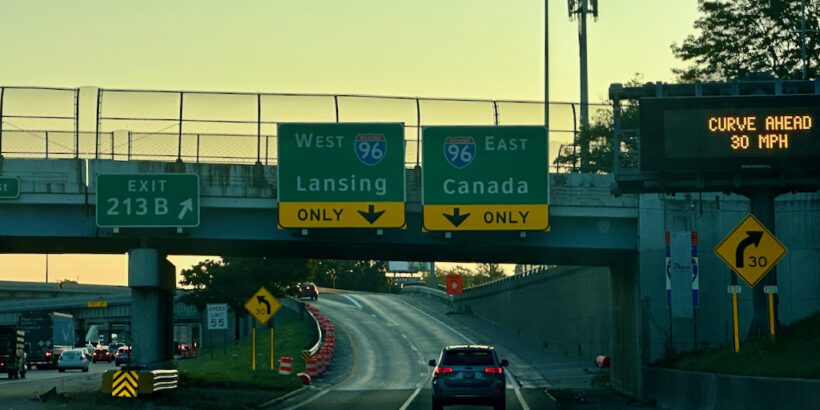Our recent journey led us to cross the Canadian border by land, marking a memorable experience, especially since my last land border crossing was into Mexico many years ago. What made this excursion unique was the addition of our furry companion, a dog, which piqued my curiosity about the entire process.
Thankfully, our border crossing went smoothly, but if you’re contemplating a border-crossing adventure with a four-legged friend in tow, I’m here to provide you with all the essential insights you need. Stay tuned, as I unravel everything you need to know about traveling with pets across international borders.
Canada-US land borders overview
It might come as a surprise, but the international border between Canada and the United States holds the distinction of being the world’s longest, spanning a staggering 5,525 miles.
Given the sheer expanse of this border, it’s no wonder that it boasts over 100 land crossings.
However, here’s the catch – not all of these crossings operate on a 24/7 basis throughout the year.
In some cases, the border on one side might be open 24 hours to let you through to the other country but the other side of the border may not be open. The hours could also change based on the season with more limited hours during the winter.
You can use this Wikipedia article to help you locate the hours they are open although you may want to try to verify the hours to make sure they are still accurate.
Navigating the various border crossings between Canada and the USA can be quite the mixed bag, with some being notably smoother and hassle-free than others.
Unfortunately, this also means that you might find yourself in the midst of long, patience-testing queues. In the most unfortunate scenarios, you could be looking at a wait time of two to three hours or more but if traffic is minimal, it could only take 10 minutes or so.
If you’re curious about the current wait times you can check them out here.
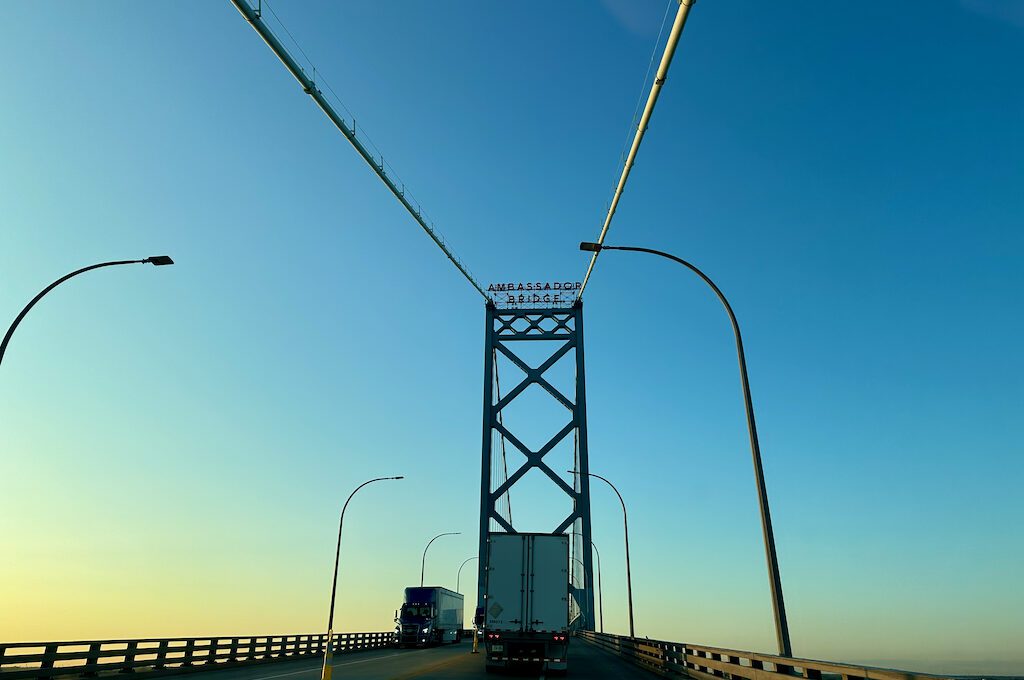
Now, here’s where a game-changer comes into play: the NEXUS program. This pre-clearance initiative offers a shortcut to expedited entry at select border crossings. It’s the golden ticket that can help you breeze through the border and avoid those agonizing delays.
The border crossings with NEXUS include:
- Alexandria Bay, New York
- Blaine, Washington (Pacific Highway)
- Blaine, Washington (Peace Arch)
- Buffalo, New York (Peace Bridge)
- Calais, Maine
- Champlain, New York
- Detroit, Michigan (Ambassador Bridge)
- Detroit, Michigan (Detroit-Windsor Tunnel)
- Highgate Springs, Vermont
- Houlton, Maine
- Niagara Falls, New York (Lewiston Bridge)
- Niagara Falls, New York (Whirlpool Bridge)
- Pembina, North Dakota
- Point Roberts, Washington
- Port Huron, Michigan (Blue Water Bridge)
- Sault Ste. Marie, Michigan (International Bridge)
- Sumas, Washington
To enroll in the NEXUS program, you can start by submitting an online application through the U.S. Customs and Border Protection (CBP) website or the Canada Border Services Agency (CBSA) website.
Applicants will be required to provide personal information, travel history, and answer questions about their eligibility. After submitting the online application and paying the non-refundable $50 fee, applicants will need to schedule an in-person interview at a NEXUS Enrollment Center.
During the interview, they will undergo a security check, fingerprinting, and have their documents verified.
Upon successful completion of the interview and background check, approved applicants will receive their NEXUS card, which grants access to expedited border crossings between the United States and Canada. It also grants you access to Global Entry airport kiosks.
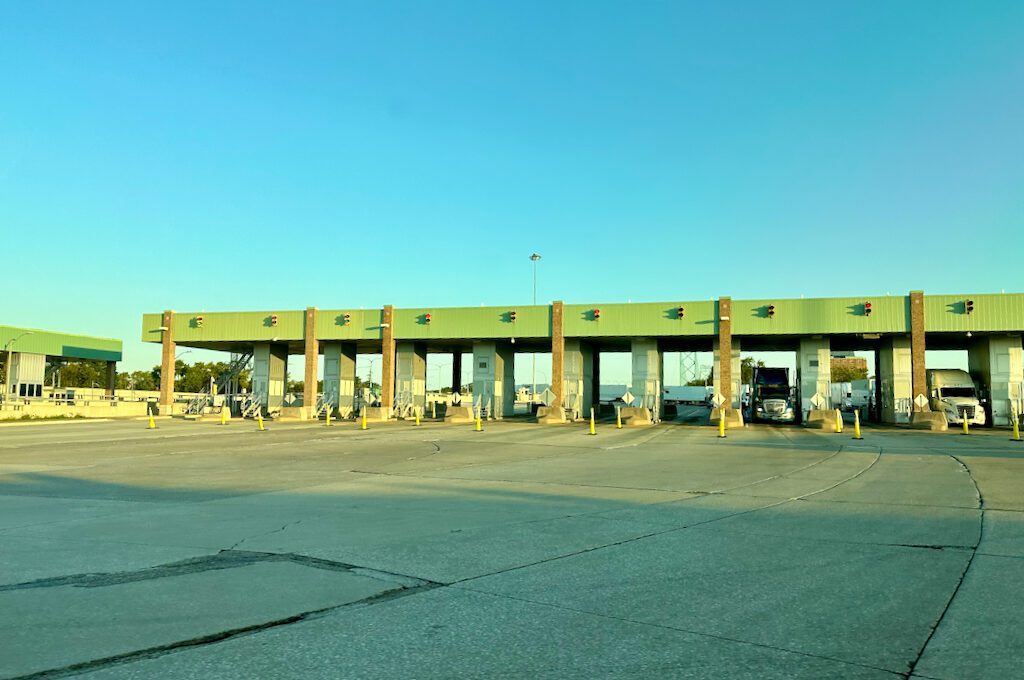
Some of the states in the US will have a lot of different border crossings but if you are curious about the most used crossings, here is a list of some of the most popular crossings for each state.
Washington State:
- Peace Arch
- Blaine Surrey
- Lynden Aldengrove
- Sumas Huntingdon
Idaho:
- Porthill Rykerts
- Eastport Kingsgate
Montana:
- Roosville Grasmere
- Piegan Carway
- Sweetgrass Coutts
North Dakota:
- Portal North Portal
- Peace Garden
- Neche Gretna
- Pembina Emerson
Minnesota:
- Warroad Sprague
- Baudette Rainy River
- International Falls Fort Frances
- Grand Portage Pigeon River
Michigan:
- Sault Ste. Marie International Bridge
- Blue Water Bridge
- Detroit Windsor Tunnel
- Ambassador Bridge
New York:
- Buffalo Niagara Falls area (Peace Bridge, Rainbow Bridge, Whirlpool Rapids Bridge, Lewiston-Queenston Bridge)
- Thousand Islands Bridge
- Seaway Bridge (Massena Cornwall)
- Blackpool Champlain
Vermont:
- Highgate Springs Saint Amand
- Derby Line Stanstead
New Hampshire:
- Pittsburg Chartierville Border Crossing
Maine:
- Madawaska Edmundston
- Houlton Woodstock
- Calais St. Stephen
- Many others (total of 24 crossings)
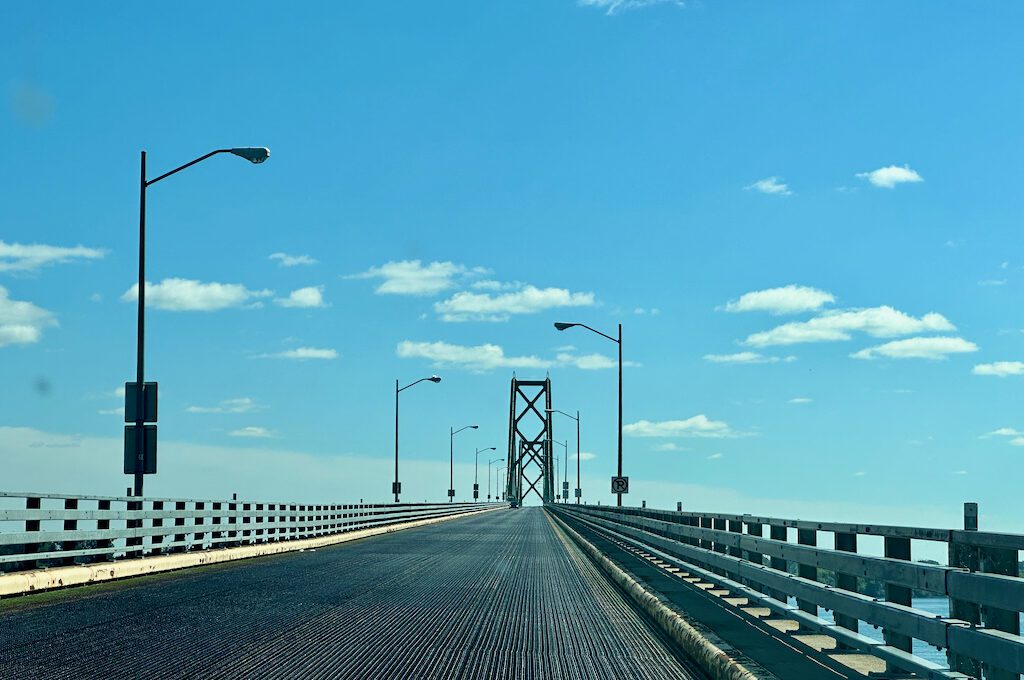
Our experience crossing the US/Canada border with a dog
Our Canadian adventure where we experienced the Roger’s Center hotel began at the border between Detroit and Windsor, just after we crossed the Ambassador Bridge. It’s essential to remember that when crossing these bridges, toll payments are often required. So, it’s a good idea to have your payment method ready, whether it’s a credit card or cash, depending on the bridge you choose.
As we approached the border, we encountered a busy scene with many large 18-wheelers, causing a minor traffic delay. However, with some patience, we successfully navigated through and reached the border station.
There, a friendly agent asked for our IDs (passports) and greeted us and conducted a routine interview about our plans in the country.
They asked typical questions, such as where we were staying, the purpose of our trip, and our occupations. This is standard procedure when crossing into Canada.
One aspect that often adds a bit of complexity for us is the fact that we’re digital nomads. Once we mention our nomadic lifestyle, it tends to trigger a series of additional questions.
However, we had our documentation ready to go, which made it relatively straightforward to substantiate our story. Our Airbnb reservations and hotel bookings were readily available on our smartphones, helping to validate our travel plans.
Once we had established the basics of our situation, the agent proceeded with a set of standard questions that they are required to ask.
These inquiries covered a range of topics, including whether we were carrying any drugs, including marijuana or THC products, if we had firearms, knives, pepper spray, or any camping equipment that might have been exposed to the outdoors, and so on. It’s all part of the standard protocol at the border. And of course, it’s a good idea to declare any items like these so that you don’t run into legal trouble.
Once the agent appeared satisfied with our answers, he kindly requested that we roll down the back window of our Jeep to inspect the vehicle’s interior. It was during this inspection that he spotted our furry companion and inquired about our documentation for the dog. Fortunately, we were well-prepared.
We promptly presented proof of our dog’s rabies vaccination, which we had in the form of an email exchange and a rabies vaccination certificate from our veterinarian. Our four-legged friend was also in excellent health, so we had no concerns on that front.
While it’s possible to access this information on your phone, I would strongly recommend having physical copies of the required documents on hand. The Canadian website explicitly advises travelers to carry “a physical original copy of all required documentation.”
Once we handed over our documents, the agent swiftly examined them before delivering the good news that we were all set. With that, we were able to proceed without any issues, making our border crossing a smooth and hassle-free experience.
It’s worth noting that there may be different requirements based on the type of pet you are bringing in, its age, and your intentions, but you can always use this helpful online form to figure out what you need.
In some instances such as when bringing a young 2-month kitten you may only need to bring proof of age. But for other pets such as birds you might have to sign a declaration. And keep in mind that some types of “pets” won’t be allowed. For example, they will not consider a pigeon a “pet bird.”
So again, just go through that form and take note of every mentioned requirement so that you are prepared to get through without a problem.
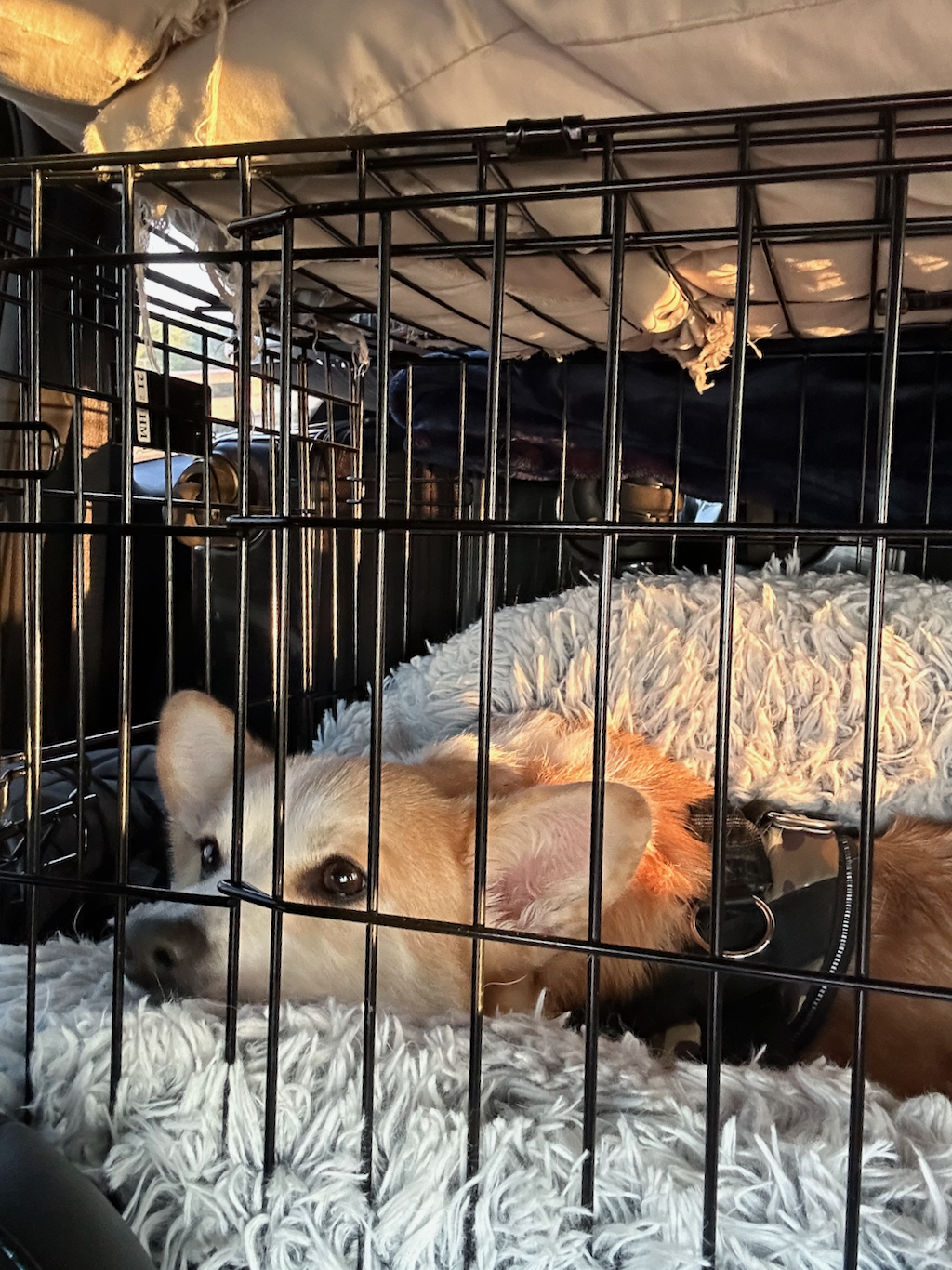
Final word
All in all, our journey from the US to Canada via a land border crossing proved to be quite manageable. Armed with answers to the expected questions and all the required documentation, the entire process unfolded smoothly, sparing us any undue stress.
It’s worth noting that when traveling with a pet, it’s prudent to be ready for the possibility of a more thorough inspection, should an agent’s curiosity be piqued. However, with all the paperwork in proper order, the experience is unlikely to pose any significant hurdles. Preparedness, it seems, is the key to a hassle-free border crossing adventure.
Daniel Gillaspia is the Founder of UponArriving.com and the credit card app, WalletFlo. He is a former attorney turned travel expert covering destinations along with TSA, airline, and hotel policies. Since 2014, his content has been featured in publications such as National Geographic, Smithsonian Magazine, and CNBC. Read my bio.

